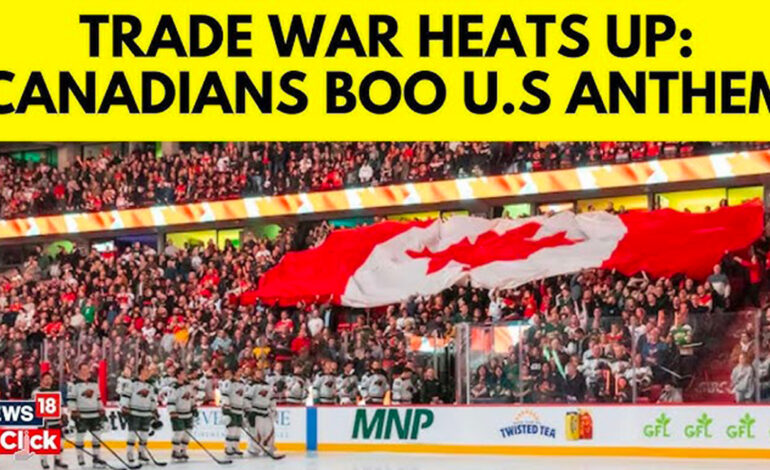The Trump administration’s imposition of tariffs on steel, aluminum, and other goods in 2018 sparked a global trade war, with Canada among the most affected nations. While the immediate economic consequences of these tariffs were widely discussed, their ripple effects on specific industries, such as sports, have been less explored. For Canada, a country deeply invested in both professional and amateur sports, the trade war has had significant implications. This article examines the effects of the Trump tariff trade war on Canadian sports, what stakeholders need to know, the broader impact, and potential strategies to mitigate these challenges.
What You Need to Know
The Trump tariffs, particularly those on steel and aluminum, were justified by the U.S. administration as a means to protect domestic industries and address trade imbalances. However, Canada, as the largest exporter of steel and aluminum to the U.S., was hit hard. These tariffs disrupted supply chains, increased production costs, and created uncertainty in industries reliant on these materials—including sports.
Sports equipment manufacturing, arena construction, and infrastructure development are all heavily dependent on steel and aluminum. From hockey rinks to football stadiums, the increased costs of raw materials have had a cascading effect on the sports industry. Additionally, the retaliatory tariffs imposed by Canada on U.S. goods further complicated trade relations, affecting the import and export of sports-related products.
The Impact on Canadian Sports
- Increased Costs for Sports Equipment and Infrastructure
Many sports equipment manufacturers in Canada rely on steel and aluminum for products like hockey sticks, skates, and protective gear. The tariffs raised the cost of raw materials, leading to higher prices for consumers. Similarly, the construction and maintenance of sports facilities, such as ice rinks and stadiums, became more expensive, straining budgets for municipalities and private investors. - Challenges for Amateur and Grassroots Sports
Amateur sports organizations, which often operate on tight budgets, felt the pinch. Higher equipment costs and facility expenses made it more difficult to provide affordable access to sports for young athletes. This could have long-term consequences for talent development and participation rates in sports like hockey, soccer, and basketball. - Impact on Professional Sports Leagues
Professional sports leagues, such as the NHL, CFL, and MLS, also faced challenges. The increased costs of building and maintaining stadiums, coupled with potential declines in consumer spending due to broader economic uncertainty, created financial pressures. For example, the NHL, with its deep ties to both Canadian and U.S. markets, had to navigate the complexities of cross-border trade and fluctuating costs. - Retaliatory Tariffs and Trade Disruptions
Canada’s retaliatory tariffs on U.S. goods, including sports equipment and apparel, disrupted supply chains and created uncertainty for retailers and consumers. This not only affected the availability of products but also led to higher prices for imported goods, further straining the sports industry.
What Can Be Done?
- Diversify Supply Chains
Canadian sports equipment manufacturers and facility developers should explore alternative sources of steel and aluminum to reduce reliance on U.S. imports. This could involve sourcing materials from other countries or investing in domestic production capabilities. - Government Support and Subsidies
Federal and provincial governments can play a role in mitigating the impact of tariffs by providing subsidies or tax incentives for sports organizations and equipment manufacturers. This would help offset increased costs and ensure continued investment in sports infrastructure. - Promote Domestic Manufacturing
Encouraging the growth of domestic sports equipment manufacturing could reduce dependence on imports and create jobs. By investing in innovation and technology, Canadian companies can produce high-quality, affordable equipment for both domestic and international markets. - Strengthen Cross-Border Collaboration
Despite the trade tensions, Canadian and U.S. sports leagues and organizations should work together to advocate for policies that support the sports industry. This could include lobbying for exemptions or reductions in tariffs on sports-related goods. - Focus on Grassroots Sports
Protecting access to sports for young athletes should remain a priority. Community organizations, schools, and governments can collaborate to ensure that increased costs do not hinder participation. Fundraising initiatives, equipment donation programs, and partnerships with local businesses can help bridge the gap.
Conclusion
The Trump tariff trade war has had far-reaching effects on Canadian sports, from increased costs for equipment and infrastructure to challenges for amateur and professional leagues. While the situation has created significant hurdles, it also presents an opportunity for innovation, collaboration, and resilience. By diversifying supply chains, seeking government support, and prioritizing grassroots sports, Canada can navigate these challenges and continue to thrive as a global leader in sports. As trade relations evolve, stakeholders must remain vigilant and proactive to ensure that the sports industry remains accessible, affordable, and sustainable for all Canadians.








